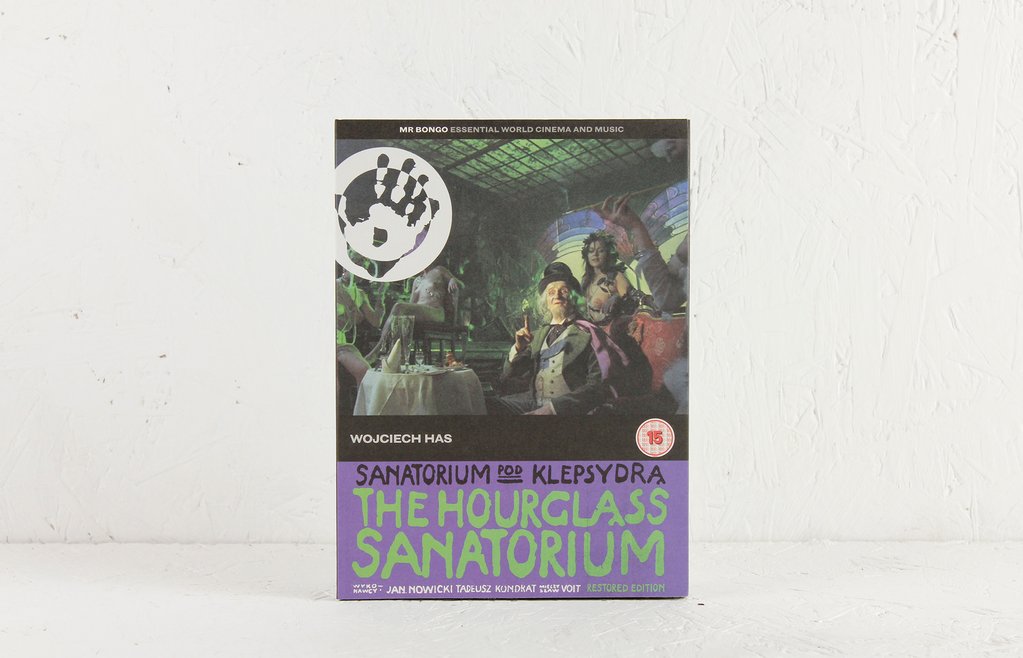
The son of a Jewish father and a Catholic mother, Wojciech Jerzy Has was born in Kraków in 1925. During the Second World War, he studied at a business school while taking secret classes at the Kraków Academy of Fine Arts. From an early age, Has was inspired by Surrealism. He would read André Breton’s famousSurrealist Manifesto as well as the poetry of Paul Éluard and Louis Aragon. Visually, the paintings of Max Ernst and Salvador Dali became lifelong touchstones. His interest in cinema led him to pursue a one year course in Film; after which, he began making educational and documentary films at the Warsaw Documentary Film Studio.
His first feature, The Noose (1958), chronicled a day in the life of an alcoholic. Unlike Has’ later films, The Noose was limited in action to the character’s immediate surroundings, focused solely on his self-destructive behavior. While lacking the occult-driven style which he would pioneer with his period films, the film’s focus on the character’s psychology created a significant impact at the time. Post-war Polish cinema still labored under the influence of Italian neorealism. In The Noose, as well as Farewells and How to Be Loved, Has depicted contemporary Poland and its recovering trauma from the War with a focus on his character’s inner life. Thy eschewed any engagement with politics, an attitude which challenged the Socialist Realism of the Communist doctrine. In a 1981 interview, Has admitted that he rejected “matters, ideas, themes only significant for the present day,” favoring an art-for-art’s sake approach to film-making. In that regard, his most significant work would follow in the mid-60s.
The Saragossa Manuscript was an adaptation of a novel by explorer Jan Potocki. The film chronicled the journey of Alfonso van Worden (played by Polish star, Zbigniew Cybulski) in 17th Century Spain. The film’s digressive style of storytelling and its haunting mise-en-scène created a significant impact on its initial release. Luis Buñuel, who had considered adapting Jan Potocki’s novel himself, was a great admirer. Its fans include writers Neil Gaiman and Salman Rushdie as well as musicians like Jerry Garcia of theGrateful Dead. For Has, the film was a manifestation of his lifelong pre-occupation with surrealism. Its black-and-white CinemaScope framing created a visual style with powerful suggestions of the occult, hinting at forbidden desires which civilization thinly repressed. His succeeding film, The Doll was his first in colour. An adaptation of Boleslaw Prus’ novel of the same name, the film portrays a young hero’s romantic passion for an aristocratic woman.
His filmography became sparse in the coming years. The Hourglass Sanatorium was released in 1973 after a five year gap. An Uneventful Story would follow in 1983, ten years later. This perhaps had to do with the reception garnered by the former film. Adapted from Bruno Schulz’ prose works, The Hourglass Sanatorium hearkened to The Saragossa Manuscript’s occult-derived narrative. Polish authorities saw its image-driven narrative as an allegory for its decaying bureaucracy. Its focus on the Jewish aspects of the author’s works and its evocation of the horrors of the Holocaust further upset the Communist bureaucracy.
Has was forbidden to send the film abroad but he managed to smuggle a print to the Cannes Film Festival, where it received a Jury Prize. This gesture of defiance perhaps resulted in a ten year break from film-making. Only four more films would follow in the 1980s. His final film, The Tribulations of Balthazar Koberformed a third with The Saragossa Manuscript and The Hourglass Sanatorium. Adapted from a novel byFrederick Tristan, it returned Has to the picaresque style of narrative of his previous films. It traces the path of the title character during his wanderings of 16th Century Europe around the time of the advent of the printing press; a fitting celebration of the triumph of human imagination over the pressures and restrictions of human society. The most significant activity undertaken by Has during his final years (he died in 2000), was as a teacher at the Lódz film school at Poland. The restorations of The Saragossa Manuscript and The Hourglass Sanatorium in the 90s brought renewed attention to his unique body of work.